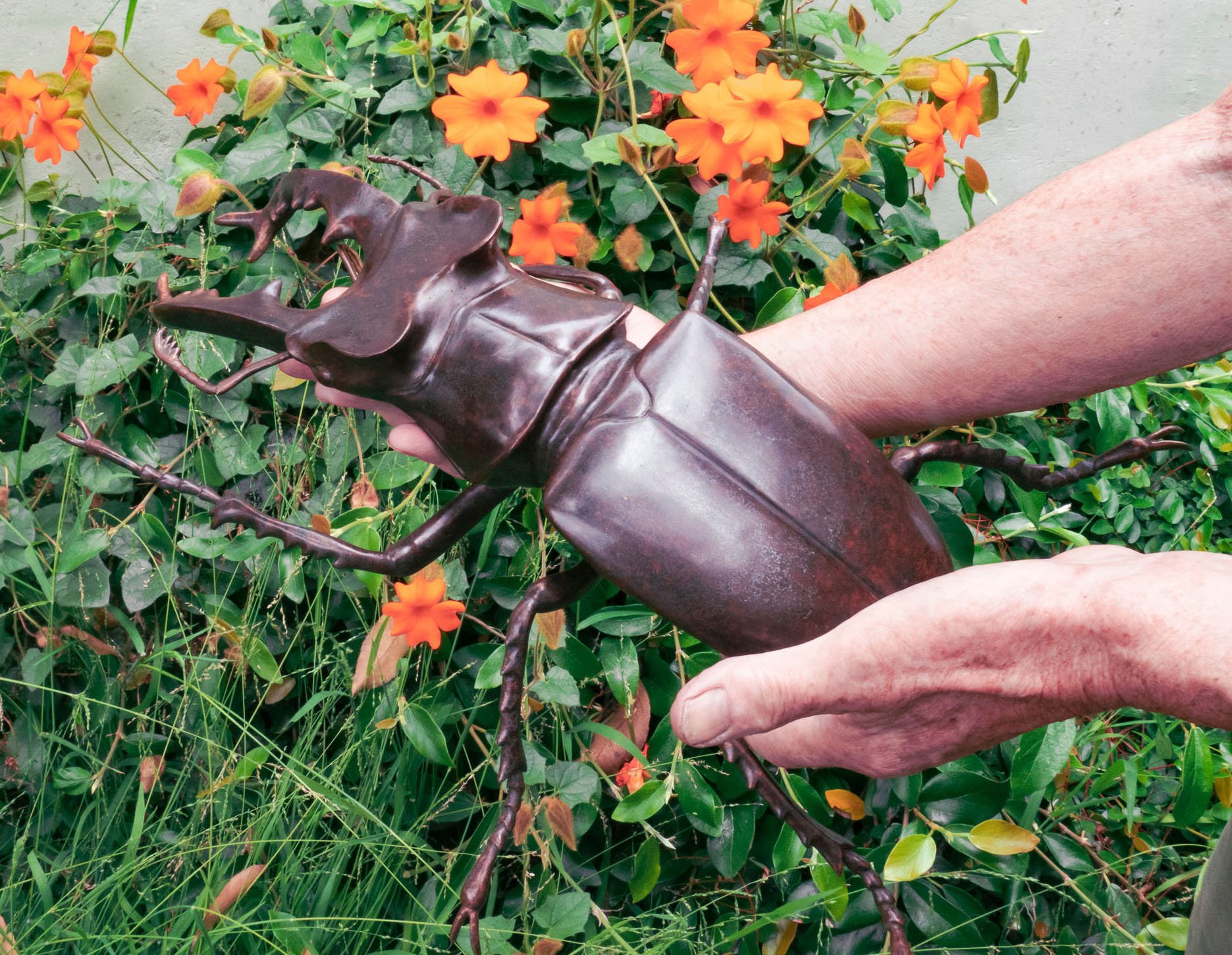It is official, we are now adding candle holders to items that you can order online . To mark the event, we have added 2 colored frogs and a simple aeonium to our initial offering.
The frog candle holder at a height of 15” and width of 5” is a handsome piece perfect for the center of any dining table as a single piece or as part of a fun collection of candle holders. The frog is available in mottled green, mottled red or in a more muted antique oil rubbed finish. The green and red mottled frogs were inspired by the poisonous dart frogs of south America who use their bright colors to help ward of predators. The poison of the frogs provided a useful coating for the dart heads of indigenous hunters which explains how they came to be named.
The frog is a decorative accent on this succulent inspired candle holder. The base was inspired by the aeonium plant family, while the stem was inspired by the dramatic center shoot of an of an agave plant.
The red and green markings are hot patinas of red and green dye oxides skillfully applied by brush to the heated surface of the frog. A propane flame source is used to heat the frog to a temperature that will allow the dye to bond to the surface. Once the red or green markings are set, the contrasting black spots and stripes are applied using a cold acidic solution.
The frog on the candle holder is created using the same mold we use to create the frog cabinet pull. At the wax stage we bend the frog’s legs and meld them in climbing position to the wax stem of the candle stick. Six molds and six waxes are used to create the candle holder, 3 for the base, 1 for the stem, 1 for the frog and 1 for the candle holder. Once cast, the 6 components are welded together and patinaed.









